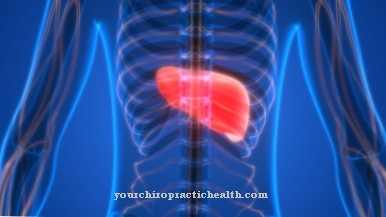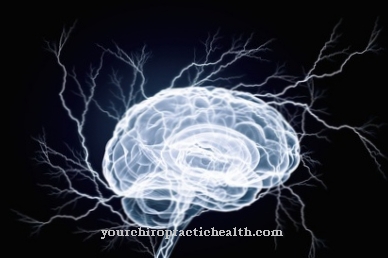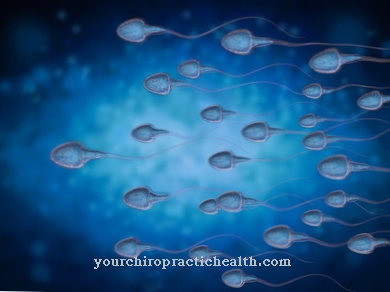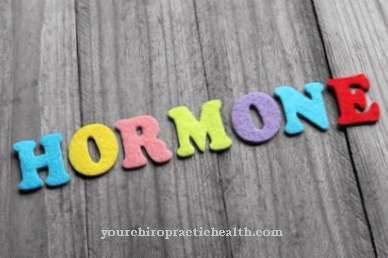Under Embryogenesis (from the ancient Greek "émbryon" for "unborn womb" and "genesis" for "development") one understands in biology the early process in the development of an embryo. It is the first phase of the germinal development of the fertilized egg cell (zygote) and occurs in different processes in all living beings.
What is embryogenesis

In humans, embryogenesis begins after the egg cell has been fertilized and takes place over a period of eight weeks. During embryogenesis, all of the later organs of the fetus develop. However, many organs only become functional later.
Embryogenesis is a phase in which there is strong growth of the maturing organism. During this time, he is highly sensitive to disturbances and external influences, which explains why the first eight weeks of pregnancy are considered to be particularly risky.
Embryogenesis ends with the onset of fetogenesis, during which, among other things, the further development and functionality of the organs as well as a constant increase in size and weight take place.
Embryogenesis is also called Embryonic period and is associated with a striking change in the external shape of the embryo. Within embryogenesis, a distinction is made between the pre-embryonic phase (1st to 3rd week of pregnancy), in which three germ layers develop, and the actual embryonic phase, which extends from the 4th to the 8th week and is associated with the development of the organ systems. This highly sensitive process takes place with the help of genetic programming and in interaction with environmental factors that must be in a precisely coordinated balance.
Function & task
Early embryogenesis is the phase in embryonic development in which the young organism develops fastest. After the egg cell and sperm have fused together and a zygote has formed, it migrates into the female uterus over a period of three days. During this migration the cells divide (furrow). Continuous constriction turns the original cell into a ball full of blastomeres, the so-called morula. This particular cell division occurs in a very rapid sequence. The cell nucleus can divide about every eight minutes.
The formation of the morula is completed on the 4th day of pregnancy. This then leads to a differentiation of the blastomeres, with the outer layer of cells developing into the membrane and placenta, while the inner layer will eventually develop into the embryoblast, the origin of the later embryo.
After the cluster of cells, now known as a blastocyst, has established itself in the lining of the uterus, three germ layers form in the gastrulation that is connected to it, from which the entire human tissue and organ structures will later develop. In addition, the so-called neural raw, which is the basis of the central nervous system, is folded away.
A turning point in embryogenesis is the formation of the so-called primitive streak. This can be seen as a thickening on one side of the organism and for the first time reveals a spatial orientation: a longitudinal axis of the fetus has been established. At one end of the primitive stripe is the primitive knot from which the head of the embryo will develop from now on.
After this early embryonic development has been completed, the second part of embryogenesis follows, the main task of which is organogenesis - the formation of the later organs. During the first two weeks of this development phase, the brain, heart and eyes develop.
The entire embryogenesis forms the basis for the further development of the fetus. Everything that is stipulated and ordered in its period of time has a wide range of effects on the development of the embryo and on human life as a whole.
Illnesses & ailments
In the period of embryogenesis, the risk of possible malformations and diseases is greatest, since organ formation is not yet complete and can be extremely influenced. A multitude of different triggers can impair the optimal development of the fetus and are not infrequently the cause of miscarriages. In some cases, these are not even noticed by the woman, so it can happen that a fetus is lost before the woman has even noticed her pregnancy.
If the miscarriage does not occur and the harmful influences persist, serious deformities can develop in the fetus. Underdevelopments in the brain region, facial deformities and malformations of the internal organs are the most common malformations.
The greatest risk factors for a miscarriage or deformation in the embryogenesis stage are infectious diseases, toxins (such as nicotine) that enter the maternal organism, drugs, or harmful radiation. Mothers who consume alcohol during early pregnancy, for example, run the risk of their child developing fetal alcohol syndrome. This manifests itself later in growth disorders, characteristically striking facial features or various psychological abnormalities. After the embryogenesis phase, the risk of malformations in the fetus steadily decreases.
In addition to the risks that this phase poses for the unborn being, the first weeks of pregnancy are also a difficult time for the expectant mother. Since the early stages of pregnancy are associated with strong hormonal changes, around 50 to 90% of women suffer in this phase increased with nausea, vomiting and dizziness. In the course of pregnancy, however, the female hormone balance levels off again and the symptoms decrease in the majority of cases.

















.jpg)







.jpg)


